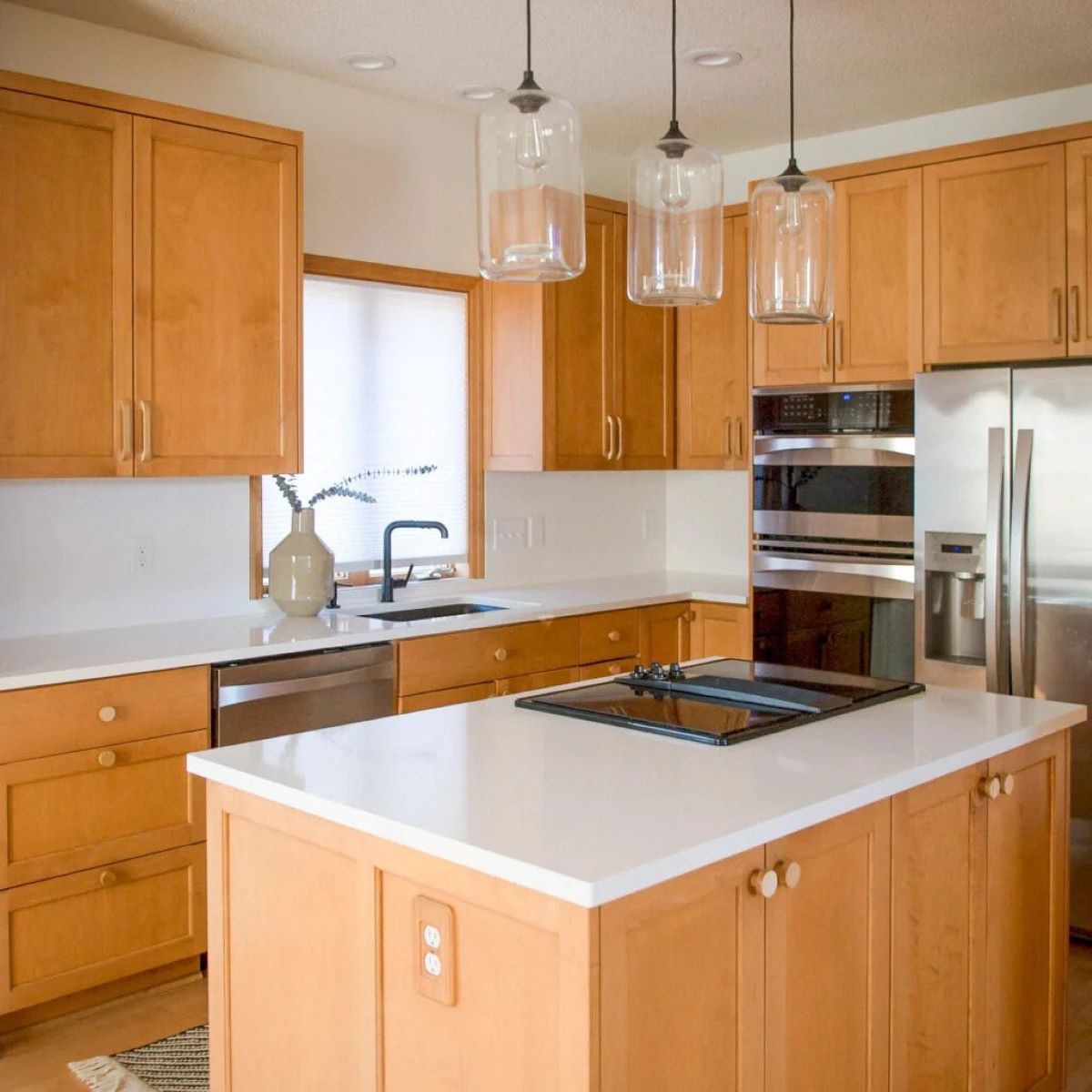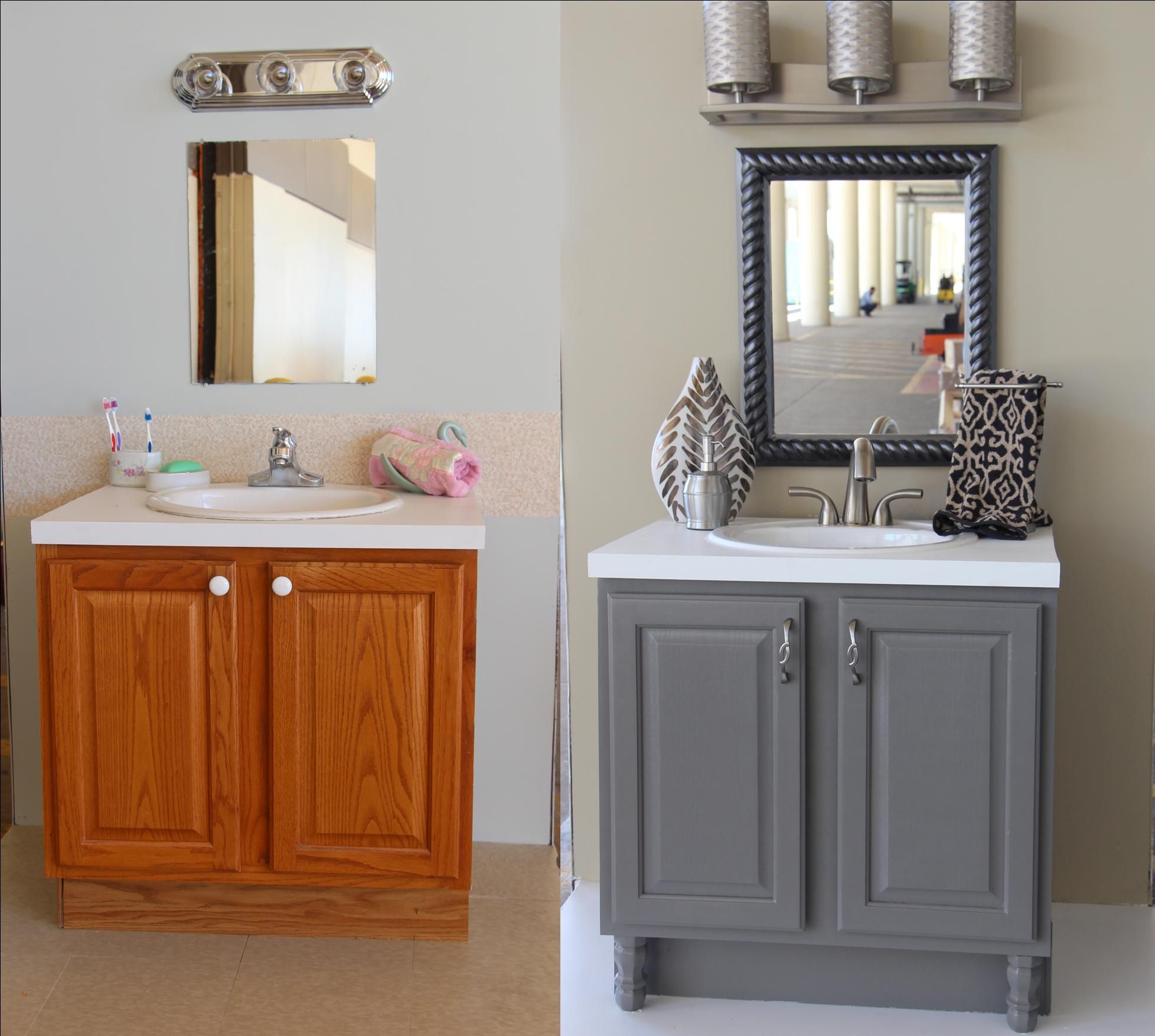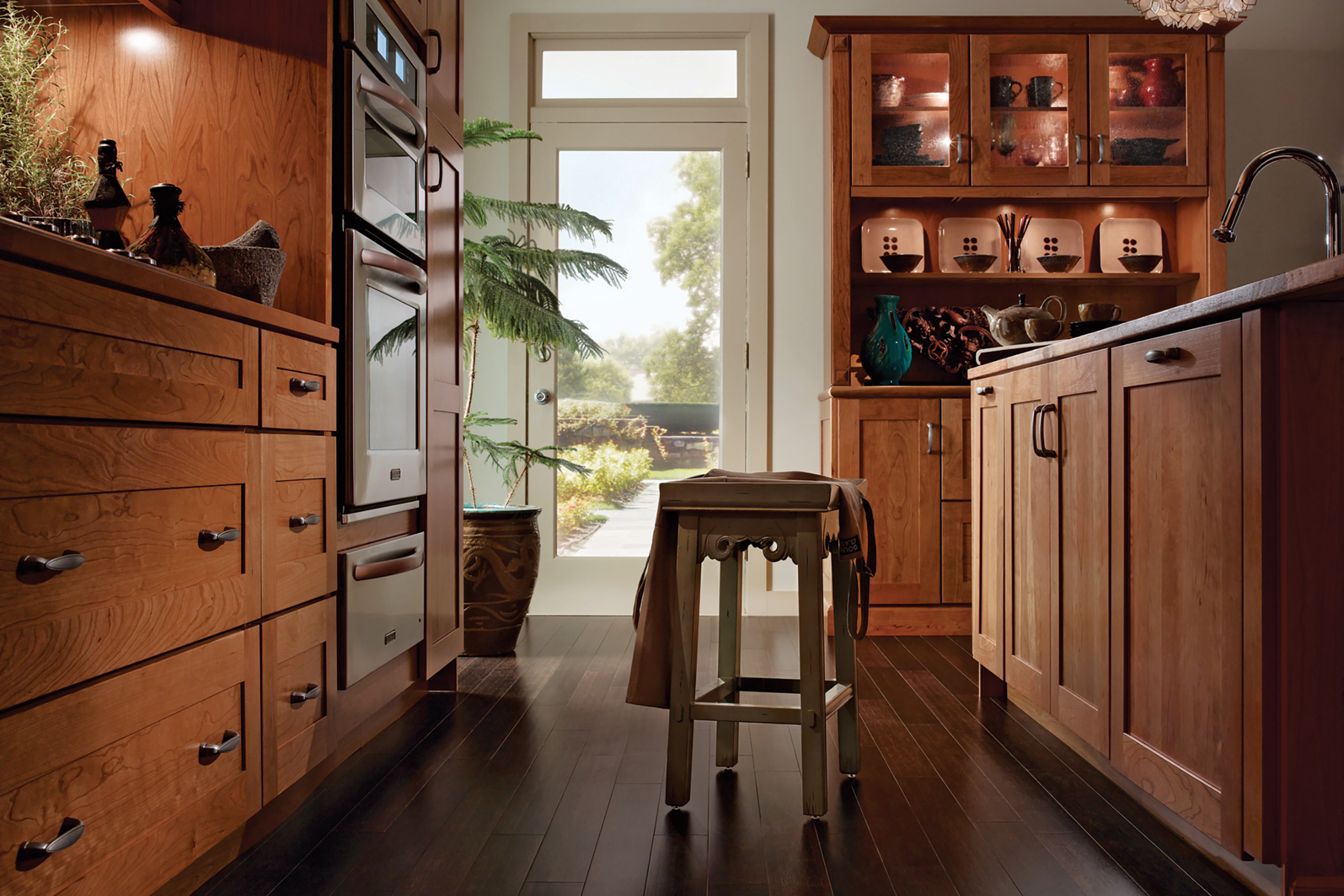Types of Finishes for Wood Cabinets: Best Finish For Wood Cabinets

Choosing the right finish for your wood cabinets is a crucial decision that will impact their appearance, durability, and maintenance requirements. The finish you select will determine the overall look and feel of your kitchen or bathroom, as well as its resistance to scratches, stains, and moisture.
Paint
Paint is a popular choice for wood cabinets due to its versatility and affordability. It can be applied in a wide range of colors and finishes, allowing you to create a custom look that complements your décor. Paint also provides a durable and protective coating that can withstand everyday wear and tear.
- Pros:
- Highly customizable: Paint offers a vast array of colors and finishes, allowing you to achieve a unique look that matches your style and décor.
- Durable: Paint creates a protective layer that shields the wood from scratches, stains, and moisture.
- Easy to clean: Painted cabinets are generally easier to clean than stained cabinets, as they are less porous.
- Affordable: Paint is typically less expensive than other finishes, making it a budget-friendly option.
- Cons:
- Can hide the natural beauty of the wood: Paint covers the wood’s grain and texture, obscuring its natural beauty.
- Requires careful preparation: Proper surface preparation is crucial for a smooth and even paint finish. This includes sanding, cleaning, and priming.
- May chip or peel over time: While durable, paint can chip or peel if not applied correctly or if exposed to excessive wear and tear.
Example: A white painted kitchen with shaker-style cabinets. The white paint provides a clean and modern look, while the shaker style adds a touch of traditional elegance. The paint offers a durable and easy-to-clean surface, making it a practical choice for a busy kitchen.
Stain
Stains are used to enhance the natural beauty of wood by adding color and depth to its grain. They penetrate the wood, allowing the grain to show through while adding a layer of protection. Stains are available in a wide range of colors and finishes, from light and natural to dark and rich.
- Pros:
- Enhances the wood’s natural beauty: Stains allow the wood’s grain and texture to shine through, showcasing its natural beauty.
- Provides a protective layer: Stains offer a degree of protection against scratches, stains, and moisture.
- Variety of colors and finishes: Stains are available in a wide range of colors and finishes, allowing you to customize the look of your cabinets.
- Cons:
- Less durable than paint: Stains offer less protection than paint and may be more susceptible to scratches and stains.
- More difficult to clean: Stained cabinets can be more difficult to clean than painted cabinets due to their porous surface.
- Requires careful application: Proper application is crucial to ensure an even and consistent finish.
Example: A cherry wood kitchen with a dark walnut stain. The stain enhances the rich color and grain of the cherry wood, creating a warm and inviting atmosphere. The stain provides a protective layer while allowing the wood’s natural beauty to shine through.
Natural Oil
Natural oils, such as tung oil, linseed oil, and teak oil, are used to nourish and protect wood. They penetrate the wood’s pores, providing a durable and water-resistant finish that enhances its natural beauty. Natural oils are a popular choice for woodworkers and furniture makers who seek a natural and environmentally friendly finish.
- Pros:
- Enhances the wood’s natural beauty: Natural oils enhance the wood’s natural color and grain, bringing out its unique character.
- Durable and water-resistant: Natural oils provide a durable and water-resistant finish that protects the wood from scratches, stains, and moisture.
- Environmentally friendly: Natural oils are a sustainable and eco-friendly alternative to synthetic finishes.
- Easy to apply and maintain: Natural oils are relatively easy to apply and maintain, requiring only occasional reapplication.
- Cons:
- Less durable than paint or stain: Natural oils offer less protection than paint or stain and may require more frequent reapplication.
- May darken the wood: Some natural oils, such as tung oil, can darken the wood over time.
- Not suitable for all woods: Some woods, such as oak and maple, may not absorb natural oils as well as others.
Example: A mahogany kitchen with a tung oil finish. The tung oil enhances the mahogany’s rich color and grain, creating a warm and inviting atmosphere. The oil provides a durable and water-resistant finish that protects the wood from scratches and spills.
Factors to Consider When Choosing a Finish

Selecting the right finish for your wood cabinets is crucial, as it significantly impacts their appearance, durability, and longevity. The best finish depends on several factors, including the wood type, desired aesthetic, budget, and the room’s environment.
Wood Type
The type of wood used for your cabinets influences the best finish choice. Some woods, like oak and maple, are naturally porous and require a finish that will seal the pores and prevent staining. Other woods, like cherry and walnut, are less porous and can be finished with a thinner coat.
- Hardwoods: Hardwoods like oak, maple, and cherry are more durable and resistant to scratches and dents. They often require a finish that enhances their natural beauty and protects them from wear and tear.
- Softwoods: Softwoods like pine and cedar are less durable but can be more affordable. They often require a finish that provides additional protection against scratches and dents.
Desired Aesthetic
The desired aesthetic for your cabinets plays a significant role in choosing the finish. Consider the overall style of your kitchen or bathroom and the look you want to achieve.
- Natural Look: For a natural look, consider using a clear finish like oil or wax, which allows the wood’s grain and color to show through.
- Stained Look: For a stained look, choose a stain that complements the wood’s natural color and enhances its beauty. Stains can be applied in various shades, from light to dark, to achieve the desired effect.
- Painted Look: For a painted look, choose a paint that matches the overall color scheme of your kitchen or bathroom. Paint can be used to create a modern or traditional look, depending on the color and finish.
Budget
The cost of different finishes varies significantly. Consider your budget and choose a finish that fits within your price range.
- Oil-based finishes: Oil-based finishes are typically more expensive than water-based finishes but offer superior durability and protection.
- Water-based finishes: Water-based finishes are less expensive than oil-based finishes and are easier to apply and clean up. However, they may not offer the same level of durability.
- Wax finishes: Wax finishes are typically the least expensive and offer a natural, protective finish. However, they may not be as durable as other finishes.
Room’s Environment
The room’s environment, such as humidity and exposure to sunlight, can also affect the finish’s performance.
- Humidity: In high-humidity areas, like bathrooms, it’s essential to choose a finish that is resistant to moisture and mildew. Oil-based finishes are generally more resistant to humidity than water-based finishes.
- Sunlight: In areas with direct sunlight, choose a finish that protects the wood from fading and discoloration. UV-resistant finishes can help prevent fading and protect the wood’s natural color.
Finish Suitability for Specific Applications
| Finish | Kitchen | Bathroom | Bedroom |
|---|---|---|---|
| Oil-based Polyurethane | Excellent | Good | Good |
| Water-based Polyurethane | Good | Fair | Good |
| Lacquer | Excellent | Good | Good |
| Wax | Fair | Poor | Good |
| Oil | Good | Fair | Good |
Applying and Maintaining Finishes

Applying and maintaining finishes for wood cabinets is crucial for preserving their beauty and longevity. The type of finish you choose will determine the application process and maintenance requirements.
Applying Finishes
The application process for different finishes varies. Here’s a breakdown of the steps involved:
Preparation
- Cleaning: Begin by thoroughly cleaning the cabinet surfaces with a mild detergent and water. This removes dust, dirt, and any existing finishes.
- Sanding: Sand the wood surfaces with progressively finer grits of sandpaper (e.g., 120, 180, 220) to create a smooth and even surface. This ensures the finish adheres properly.
- Filling Gaps: Use wood filler to fill any cracks or imperfections in the wood. Allow the filler to dry completely before sanding.
- Tack Cloth: Wipe the surfaces with a tack cloth to remove any dust or debris.
Application Techniques
- Oil-based Finishes: Apply oil-based finishes using a natural bristle brush or a lint-free cloth. Work in thin coats, allowing each coat to dry thoroughly before applying the next.
- Water-based Finishes: Apply water-based finishes with a foam brush or a sprayer. Water-based finishes tend to dry faster than oil-based finishes, so ensure even coverage.
- Lacquer Finishes: Apply lacquer with a sprayer or a brush. Lacquer dries quickly, so work in thin coats and allow adequate drying time.
- Polyurethane Finishes: Apply polyurethane with a brush or a roller. Polyurethane is durable and can be applied in multiple coats for a thicker finish.
Drying Times
- Oil-based Finishes: Oil-based finishes require 24 hours or more to dry between coats.
- Water-based Finishes: Water-based finishes dry much faster, typically within a few hours.
- Lacquer Finishes: Lacquer dries quickly, often within 30 minutes to an hour.
- Polyurethane Finishes: Polyurethane can take several hours to dry between coats.
Maintaining Finishes, Best finish for wood cabinets
Proper maintenance helps preserve the beauty and durability of wood cabinet finishes. Here are some key tips:
Cleaning
- Dusting: Regularly dust cabinets with a soft cloth or a feather duster.
- Cleaning Spills: Clean up spills promptly with a damp cloth. Avoid using harsh chemicals or abrasive cleaners.
- Waxing: Apply a thin layer of furniture wax periodically to protect the finish and enhance its shine.
Touch-up Procedures
- Minor Scratches: Use a touch-up marker or a small amount of matching finish to repair minor scratches.
- Deeper Scratches: For deeper scratches, sand the affected area with fine-grit sandpaper and apply a matching finish.
- Refinishing: If the finish is significantly damaged, consider refinishing the cabinets.
Tools and Materials
The right tools and materials are essential for applying and maintaining wood cabinet finishes.
Application Tools
- Brushes: Choose brushes with natural bristles for oil-based finishes and synthetic bristles for water-based finishes.
- Rollers: Use foam rollers for water-based finishes and nap rollers for oil-based finishes.
- Sprayers: Sprayers are ideal for applying lacquer and other thin finishes evenly.
- Sanding Equipment: Sandpaper, sanding blocks, and orbital sanders are essential for preparing the wood surfaces.
Maintenance Materials
- Mild Detergent: Use a mild detergent to clean the cabinets.
- Tack Cloth: Tack cloths remove dust and debris before applying finishes.
- Furniture Wax: Wax protects the finish and enhances its shine.
- Touch-up Markers: Touch-up markers help repair minor scratches.
The best finish for wood cabinets depends on your desired aesthetic and level of protection. A clear coat provides a natural look, while a stained finish adds depth and color. When considering your overall design, remember to coordinate your cabinets with the rest of the room, such as the vinyl flooring in your master bedroom.
For instance, a light-colored cabinet finish might complement a modern, minimalist bedroom with white vinyl flooring, while a darker stain might work well with a rustic master bedroom featuring wood-look vinyl planks.
The best finish for wood cabinets depends on the desired look and level of protection. A clear coat like polyurethane offers durability and a natural wood finish, while paint provides a more vibrant and customizable aesthetic. However, if you’re aiming for a distressed or vintage look, you might consider staining painted wood cabinets, a process that can be achieved through various techniques.
For a comprehensive guide on this specific approach, explore how to stain painted wood cabinets. Regardless of the chosen finish, ensuring proper preparation and application techniques is crucial for achieving a professional and long-lasting result.
